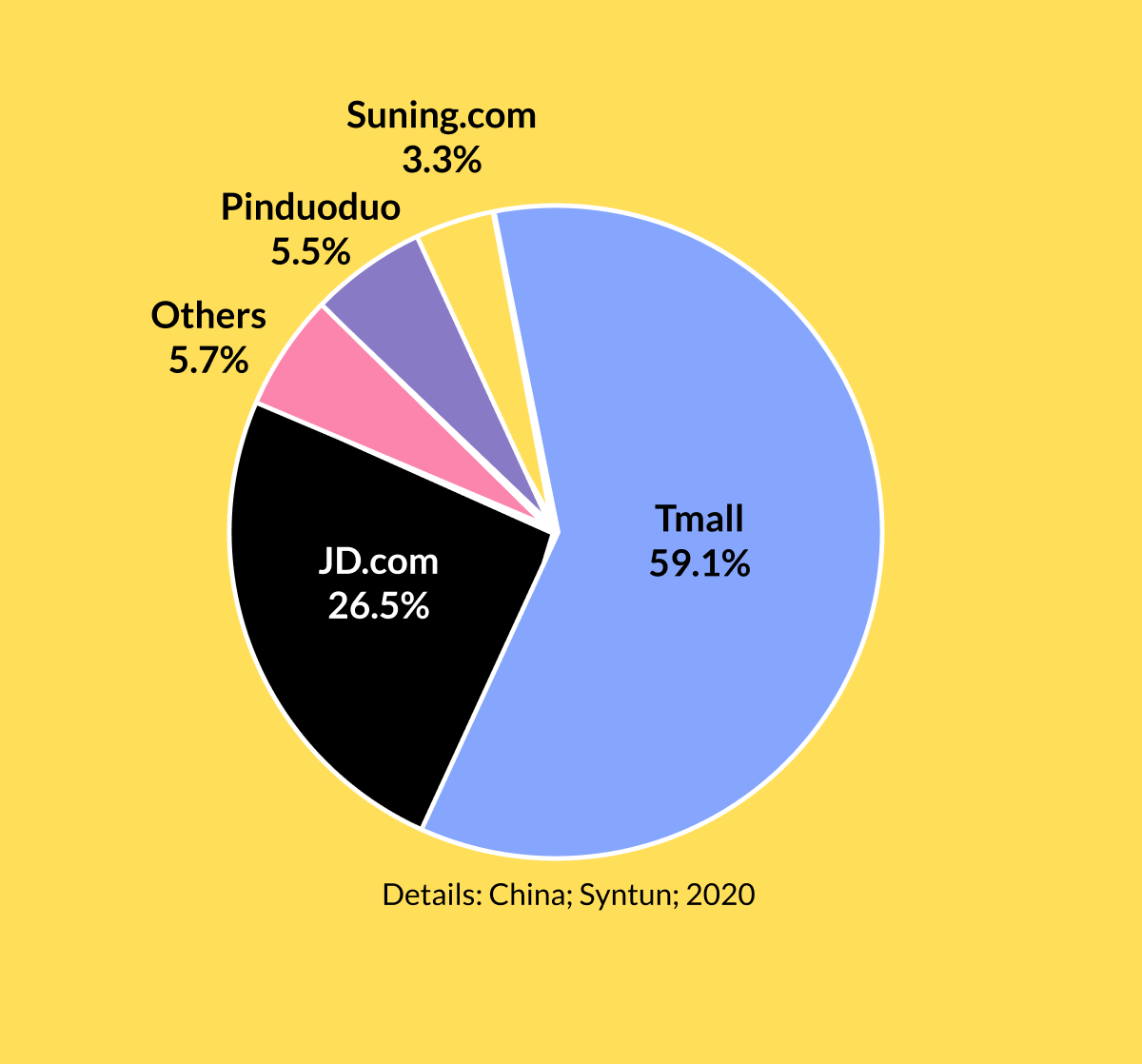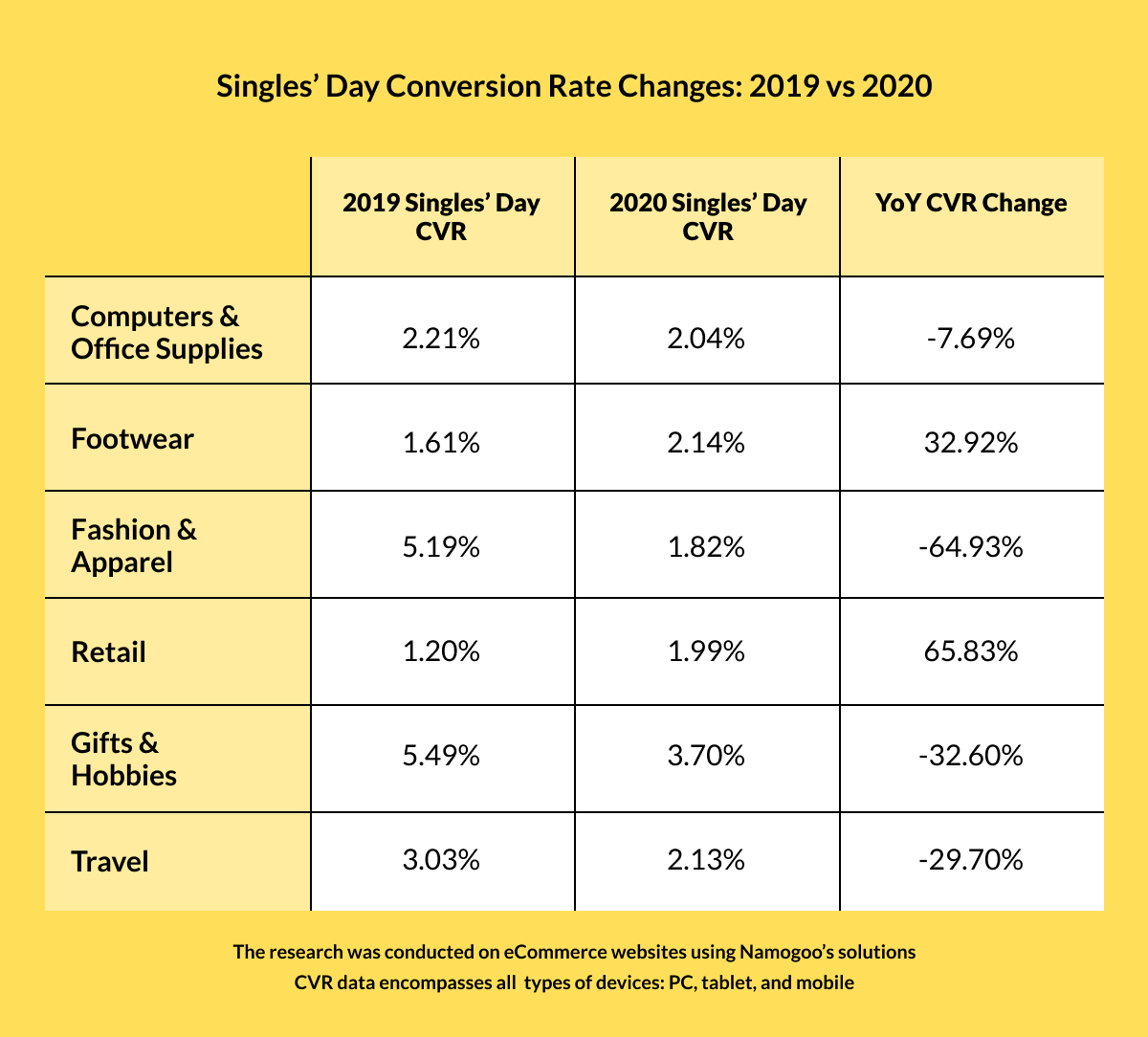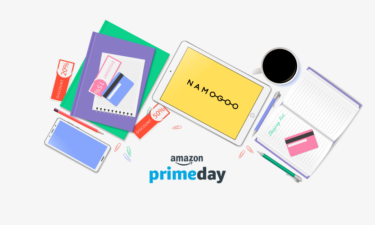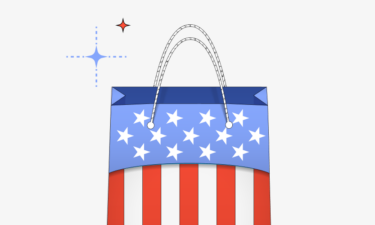Bonus Material: Why Shoppers Abandon Their Carts – 17 Reasons [Ebook]
Singles’ Day is here and millions are ready to mingle with the best offers and discounts available. From the eCommerce perspective, website optimization for mobile, shopping promotions, and loyalty programs will decide the winners this time around. Learn more about the variables and challenges, along with seven exclusive best practices to improve your bottom line as incoming traffic spikes on Singles’ Day and beyond.
In case you are unfamiliar, Singles’ Day, also known as Double Eleven, will be celebrated on the 11th of November with thousands of sales and discounts on offer.
Singles’ Day: A Growing eCommerce Goldmine
Black Friday, Cyber Monday, and Christmas are globally recognized holidays that present big profit opportunities for eCommerce businesses. But more and more retailers are now realizing that Singles’ Day is the real goldmine. Think about it as an anti-Valentine’s Day, in which singles all around the world pamper themselves with the best available deals on Alibaba, JD.com, and more.
The concept originated in 1993 at Nanjing University, where four local Chinese students decided to make a statement and show off their single status in a positive light. Although it has now become a day for dating and romantic celebrations, Singles’ Day is still sparking a lot of discussions around the ever-sensitive topic of having a significant other. Needless to say, 11/11 is now officially a national holiday in China.
The numbers don’t lie. In 2020, promotions ran from November 1st till November 12th, with Alibaba and JD.com making over $115 billion in profits. Gross Merchandise Value (GMV) was around $74 billion, compared to $38 billion in 2019.

2020 Singles’ Day Sales Distribution in China, by eCommerce Platform. Courtesy: Statista
While Singles’ Day traffic spikes are impressive, Namogoo’s own research has exposed the Achilles heel of the eCommerce space. Conversion rates aren’t where they should be in multiple industries. We took a closer look at how eCommerce industries have been performing over the past couple of years. Let’s examine the breakdowns and cover the key takeaways.
- Risers – The most noticeable year-over-year rise was noted in the Retail sector, both on mobile (76.19%) and PC (77.18%). CVR in Footwear also rose in 2020 when compared to 2019 – 45.90% on mobile, with a modest 12.04% on PC.
- Fallers – We noticed a steep CVR plunge in Fashion and Apparel eCommerce websites – 4.09% in 2019 became just 1.12% in 2020 (on mobile). Travel Equipment conversion rates also dropped in 2020 on both mobile and on PC.
- Trends – The Fallers obviously need to take counteractive measures, but most of the 2020 CVR rises came from sub-2% marks in 2019, which means that there is still a lot of work to be done on this front.

Our research uncovered a recurring trend. Despite the dramatic traffic spikes on Singles’ Day, conversion rates were underwhelming across the board. With eCommerce becoming so competitive in the holiday season, it’s evident that strategies need to be implemented to boost conversion rates.
Let’s check out some best practices that can help you stand out.
Bonus Material: 15 Black Friday Strategies for eCommerce Teams
Top 7 Best Practices to Maximize eCommerce Revenue
As 11/11 approaches, optimization and efficiency will be taking centerstage. It’s also important to keep the recent global retail supply chain logjams and economic fluctuations in mind while deciding upon your Singles’ Day strategy.
Without further ado, let’s dive into the top 7 Singles’ Day eCommerce strategies you must incorporate into your playbook.
- Implement “Buy Now, Pay Later”: Every eCommerce website has items that aren’t selling well (e.g., a fashion fad that didn’t last as long as expected) or items that have been over-ordered. Retailers can now implement the hottest strategy in the market to “get rid” of these stocks and clear storage space for more important shipments – Buy Now, Pay Later. This methodology is also proving effective in dealing with supply chain fluctuations. What’s it all about? Unlike payments made with credit cards, eCommerce businesses can incentivize sales by offering an “interest-free” version of the same idea. Read more about this emerging strategy in our detailed blog post.
- Optimize for Mobile: Mobile and tablet usage is rising exponentially, with mobile sales now accounting for over 50% of all conversions. First, mobile optimization is key when it comes to improving your Google rankings. Second, bringing in traffic is of no use if you have a website that’s not mobile-optimized. What does this mean? Your user experience and performance metrics have to be spot on, despite the traffic spikes. What are the components of a mobile-friendly eCommerce site? Text visibility should be a priority because screen sizes on smartphones and tablets vary. Also, image and video loading shouldn’t take long, as this can have a negative impact on customer satisfaction levels. UI/UX planning has to be business-centric in nature, with a generous use of pop-ups and intuitive checkouts.
- Promotions Based on Shopper Intent: What if you could offer your website visitors the right products at the right time? Would you like to tailor the right promotions needed for your Singles’ Day traffic? What about aligning your promotions with the supply chain issues you are encountering today? Known as intent-based promotions, this next-gen tech can help you achieve these goals. Besides the secret sauce (shopping intent, known affinities, etc.) that fuels this technology, various parameters including customer behavior, product data, and device details are factored into the equation. The result – better brand loyalty, because you want visitors to come back after Singles’ Day. You’ll also avoid promotion overspending, while boosting your brand performance and conversion rates.
- Integrate with Chinese Ecosystems: US-based and European brands need to be more straightforward and engage directly with Chinese eCommerce platforms. Just look at British brands like Marks & Spencers and Sainsbury’s, which are both investing in bolstering their presence on Alibaba’s Tmall website. Collaboration and partnerships, even with smaller Chinese ecosystems, are key when it comes to Singles’ Day sales today. Getting exposure on Chinese eCommerce marketplaces (Taobao, Pinduoduo, JD.com, Tmall, etc.) is just the first step. Foreign companies also need to make sure their advertising is spot on to create more brand awareness. This starts with consistent presence on Chinese messaging apps like WeChat, QQ, and Momo. When it comes to search engines, forget about Google. In China, it’s all about Baidu.

Marks and Spencer on Alibaba’s Tmall Website. Courtesy: M&S. - Minimize Bounce Rates: Let’s start off this section with a hard fact – around 20% of eCommerce website visitors are pulled away by ads run by competitors. What makes this malicious phenomenon more harmful is that you can’t do anything about it, as the “hijacking” happens on shoppers’ browsers. The visitors can be on a Sony website and view ads from rival brands, resulting in an instant loss of business if clicked upon. The good news is that this isn’t an unstoppable phenomenon anymore, even during peak times like Singles’ Day. You can now implement counteractive measures like Customer Hijacking Prevention (CHP) without meddling with your code and monitor all activity via a centralized dashboard to understand what’s going on in real-time. This hands-on approach can minimize your losses on Singles’ Day.
- Implement Loyalty Programs: One-off customers are good but not great in the grand scheme of things. Customer retention is what separates really strong eCommerce businesses from the average ones that don’t last long. Well-planned loyalty programs are becoming crucial to lure in visitors on multiple occasions during the holiday season and beyond. The key to getting this right – recognize your best customers and treat them accordingly. The most successful eCommerce platforms also know how to reward every action and push the visitor into engaging with multiple products. Special offers should also be gamified with free perks (e.g., free shipping). Gamification, which is the integration of recommendations and eye-catching graphics, creates added FOMO and encourages customers to click on the buy button faster.

Gamifying Free Giveaways. Courtesy: Shan and Toad - Streamlined Checkout Processes: Not implementing the first six techniques can lead to a cumbersome user experience and decreased customer satisfaction. This is where Abandoned Cart Recovery can become useful. This technique, however, which often makes use of email marketing to lure back visitors, isn’t as effective as it used to be. That’s why you must consider making Abandoned Cart Rate Reduction a priority.
Bonus Material: How to Reduce Shopping Cart Abandonment Rates
More and more eCommerce businesses are now recognizing the importance of reducing the number of shopping carts that need to be salvaged. How can this be achieved? A couple of effective ways include the application of Intent-Based Promotions (discussed in Best Practice #3) and eliminating friction points, such as long forms that need to be filled during the checkout process.
Switching to a Proactive Mindset
It’s no secret that the eCommerce sector is now making billions of dollars in sales on 11/11. But there is no single solution (pun intended) when it comes to elevating eCommerce profits on this day. Your strategy needs to be supplemented with third-party solutions and advanced software to create actionable insights in order to maximize your resources.
You will also need to take supply chain fluctuations into consideration, while pushing the right (available) products based on your client’s preferences. The time to get proactive and translate traffic spikes into better business results is now.







